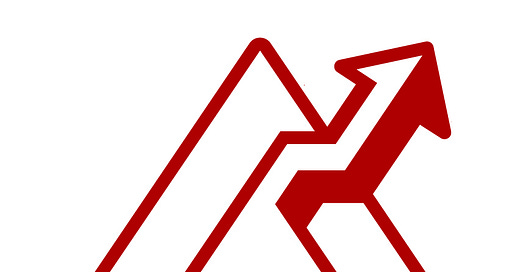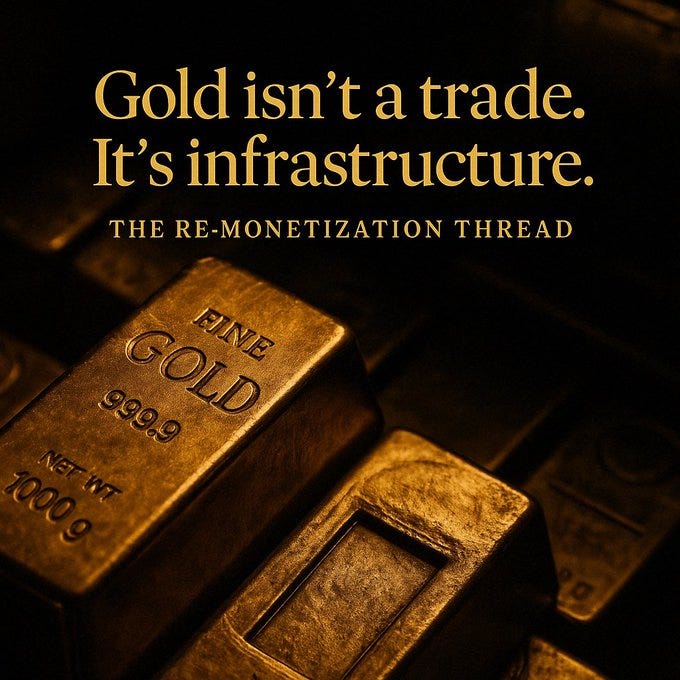Free Weekly Email 4.23.25
Felix Zulauf: Build Dry Powder Until Fall & Then Get Long For A 2-Year Rally In Stocks
One of my favorite commentators and a guy who is more right than wrong. Very worthwhile opinions.
-He thinks oil prices could rise to $150-$200 per barrel between now and 2027.
-Bullish gold but overbought short term.
-Negative on bonds
Trade Wars Are Easy to Lose
Beijing Has Escalation Dominance in the U.S.-China Tariff Fight
When a country (USA) is losing many billions of dollars on trade with virtually every country it does business with,” U.S. President Donald Trump famously tweeted in 2018, “trade wars are good, and easy to win.” This week, when the Trump administration imposed tariffs of more than 100 percent on U.S. imports from China, setting off a new and even more dangerous trade war, U.S. Treasury Secretary Scott Bessent offered a similar justification: “I think it was a big mistake, this Chinese escalation, because they’re playing with a pair of twos. What do we lose by the Chinese raising tariffs on us? We export one-fifth to them of what they export to us, so that is a losing hand for them.”
In short, the Trump administration believes it has what game theorists call escalation dominance over China and any other economy with which it has a bilateral trade deficit. Escalation dominance, in the words of a report by the RAND Corporation, means that “a combatant has the ability to escalate a conflict in ways that will be disadvantageous or costly to the adversary while the adversary cannot do the same in return.” If the administration’s logic is correct, then China, Canada, and any other country that retaliates against U.S. tariffs is indeed playing a losing hand.
But this logic is wrong: it is China that has escalation dominance in this trade war.
A well-informed article that effectively makes the case that China, not the US, holds the upper hand in a trade war. You have to register to get access to the article.
Gold is being re-monetized
A long thread on gold and the fact that governments and central banks are re-monetizing it. I have been discussing this topic for a while, but it would be beneficial for readers to familiarize themselves with this phenomenon and its potential effects.
I mentioned in the past that, following the Basel III agreements in 2023, gold was reclassified as a Tier One asset. What does that mean?
Reclassification as a Tier 1 Asset:
Physical gold (allocated gold, such as bars or coins held in vaults or on an allocated basis) is now classified as a Tier 1 asset, considered zero-risk and equivalent to cash or high-quality government bonds. This allows banks to value physical gold at 100% of its market value for reserve purposes, eliminating the previous 50% valuation haircut applied under Basel II.
Previously, gold was often treated as a Tier 3 asset (riskiest class) with higher capital requirements, discouraging banks from holding it.
Unallocated (Paper) Gold:
Unallocated gold, including derivatives, futures, or other "paper gold" contracts, is classified as a Tier 3 asset with an 85% Required Stable Funding (RSF) factor under the Net Stable Funding Ratio (NSFR). This means banks must hold 85% of the value of unallocated gold in cash or other liquid assets, making it more expensive to maintain on balance sheets.
This discourages speculative trading in unallocated gold, as it no longer counts as a low-risk asset and increases capital requirements.
In summary:
Basel III elevates physical gold’s status as a zero-risk Tier 1 asset, likely increasing demand from banks and central banks while making unallocated gold less attractive due to higher capital costs. This could shift market dynamics toward physical gold, potentially supporting higher prices and reducing reliance on paper gold contracts.
Couple this with the US Treasuries becoming less appealing and it is easy to see why intreset in gold by central banks and commercial banks has been increasing.
Why gold will surpass $30,000 in the years ahead – what to expect after the tariffs
I get worried when I see videos or articles like this one, which predict a $30,000 gold price. I believe gold is overbought in the short term and have said that on recent weekly videos. It is selling off as we speak. Nevertheless, we are just at the beginning of a longer-term bull market that will likely take the gold price higher than even I think. The factors behind gold’s rise remain in place and will likely accelerate. I will be looking to buy on pullbacks.
That’s it for this week.
Readers and listeners support this service and my work. The best way to stay updated is to follow me on Substack, YouTube, Facebook, and X. You can also consider buying me a coffee if you're inclined.
Regards,
John Polomny







